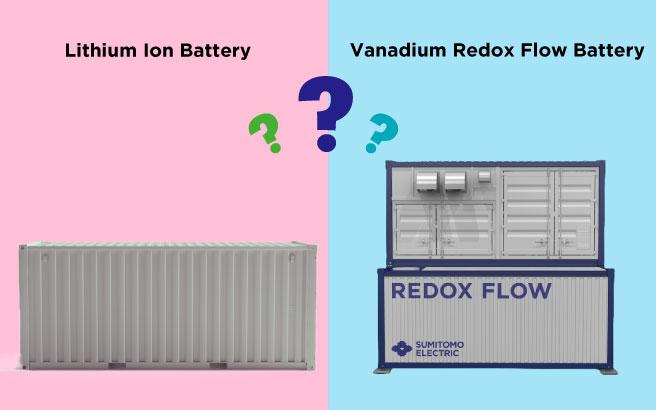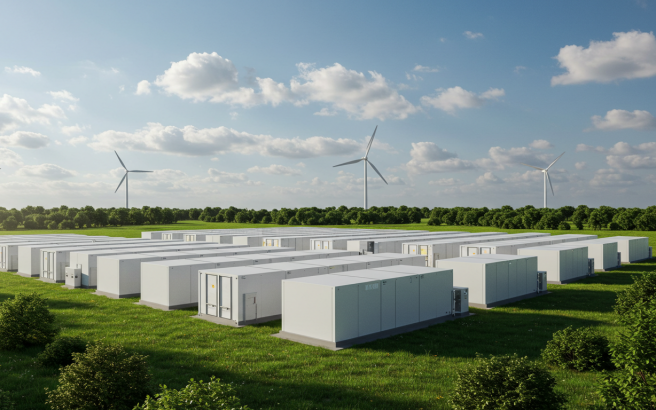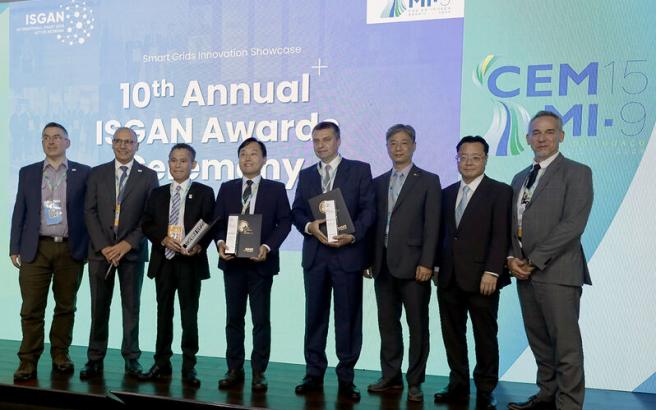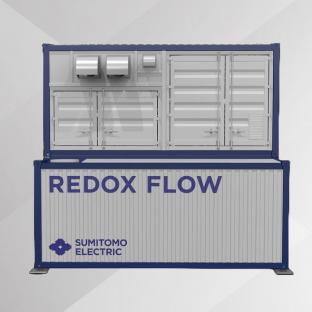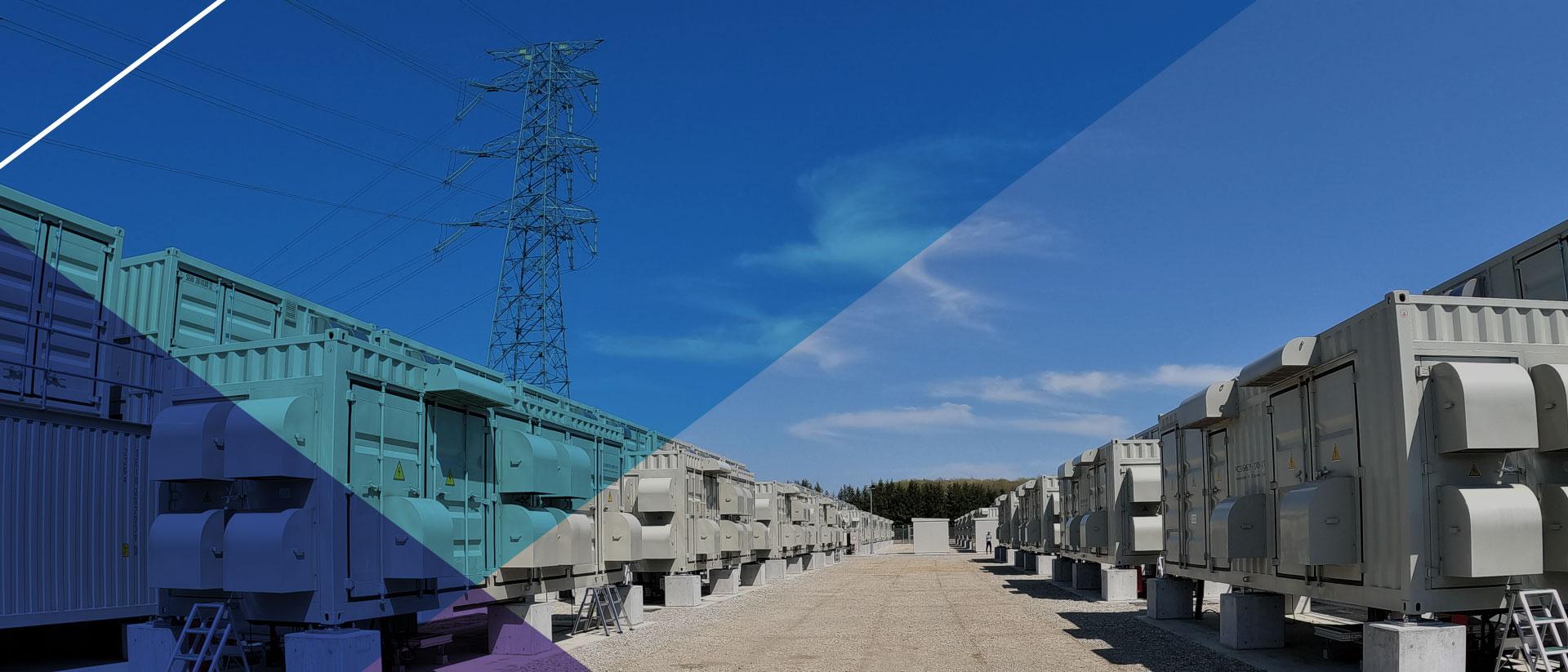
Featured Stories
Why Vanadium? The Superior Choice for Large-Scale Energy Storage
As renewable energy adoption continues to grow, so does the demand for reliable, long-duration energy storage solutions. Vanadium Redox Flow Batteries (VRFBs) have become a go-to technology for storing renewable energy over long periods, and the material you choose for your flow battery can significantly impact performance, cost, and scalability. In this article, we’ll compare different redox flow battery materials, discuss their pros and cons, and explain why vanadium is the most promising choice for large-scale energy storage.
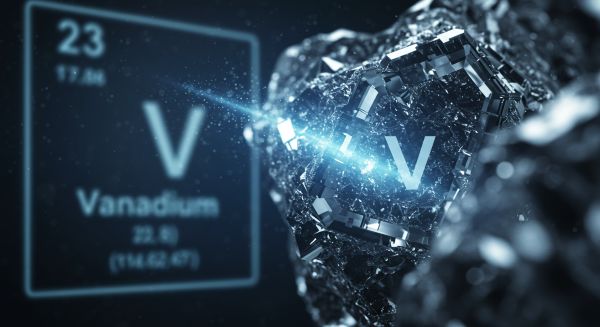
◇ Flow Battery Materials: A Comparison
Different companies and researchers are developing flow batteries using a variety of materials, each with unique properties suited for specific needs. Let’s explore the leading contenders in the flow battery space and their commercial status.
All-Vanadium (VRFB):
- Strength: Vanadium-based flow batteries are well-established and trusted within the energy storage industry, with multiple vendors providing reliable systems. These batteries perform consistently well, and larger-scale installations are becoming more common, demonstrating their ability to meet growing demands.
- Weakness: They do require ample space for installation, which means they are best suited for fixed locations rather than compact or mobile installations.
- Commercial Status: Fully commercialized. VRFBs are widely deployed, with multiple companies actively selling and installing these systems.
All-Iron:
- Strength: Iron-based flow batteries stand out due to their affordable active materials, which are both safe and widely available. Recent developments, such as the use of ligands, help reduce issues with iron plating, improving the battery’s overall reliability.
- Weakness: Iron flow batteries face the challenge of iron plating, which requires chemical additives to mitigate. This technology also operates at a relatively low voltage, and managing the hydrogen evolution reaction (HER) presents an additional hurdle. Only a few companies are currently developing this technology.
- Commercial Status: Currently in pilot deployment and early stages of commercial availability. A few companies are exploring this technology, but it's still early-stage.
Zinc-Based:
- Strength: Zinc-based flow batteries, including zinc-bromine and zinc-iron/ferricyanide systems, are cost-effective due to low material costs. Zinc-bromine offers higher energy density for compact solutions, while zinc-iron adds flexibility by operating in both acidic and alkaline environments.
- Weakness: Zinc plating is a common issue, leading to dendrite formation and performance loss. Bromine's toxicity in zinc-bromine batteries complicates handling, while zinc-iron systems face lower current densities and ferricyanide solubility challenges.
- Commercial Status: These systems are in early commercial stages, with zinc-bromine in pilot projects and zinc-iron beginning to enter the market.
Organic RFB (ORFB):
- Strength: Organic flow batteries offer the potential for low-cost, environmentally friendly energy storage, using non-toxic materials. This type of battery also has the advantage of avoiding plating issues on the anode, which can extend its lifespan.
- Weakness: However, organic RFBs are still in the early stages of development, with many questions remaining about their long-term performance, cycle life, and stability. Additionally, their energy density tends to be lower than other flow battery options.
- Commercial Status: In the research and development phase with some early pilot projects.
Hydrogen-Based Flow Batteries:
- Strength: Hydrogen-bromine and hydrogen-manganese flow batteries both benefit from low-cost, abundant materials. Hydrogen-bromine systems avoid issues with anode plating, making them attractive for manufacturing, while hydrogen-manganese batteries offer high cell voltage and promising reliability, with no solid deposits observed in initial tests.
- Weakness: Both systems face challenges. Hydrogen-bromine batteries require careful handling of toxic bromine and may need expensive platinum catalysts to boost performance. Bromine diffusion is also a concern for long-term efficiency. Hydrogen-manganese systems, despite their advantages, currently suffer from low energy density, similar to vanadium batteries.
- Commercial Status: Hydrogen-bromine is in the final stages of research and development, while hydrogen-manganese remains in the early R&D phase.
◇ Why Vanadium is the Superior Choice for Large-Scale Energy Storage
While there are several materials being tested and deployed in redox flow batteries, vanadium remains the most reliable and scalable option for long-duration, large-scale energy storage. Here's why:
1. Proven Track Record
Vanadium redox flow batteries have been deployed at commercial scales worldwide, offering a level of trust and reliability. With years of development behind them, VRFBs have proven their ability to store energy over long durations and across a wide range of conditions.
2. Scalability
Unlike other materials that face challenges with energy capacity or power decoupling, vanadium's unique chemistry allows for easy scalability. Whether you're looking to store energy from a small solar farm or a massive wind installation, VRFBs can scale up without compromising on performance. This makes them ideal for large-scale energy storage projects where long-term reliability is key.
3. Safety and Stability
Vanadium flow batteries offer a high level of safety due to their non-flammable electrolyte. The vanadium electrolyte is chemically stable, reducing the risk of hazardous reactions.
4. Long Lifecycle
Vanadium flow batteries can last 20 years or more with minimal degradation in performance. This long lifespan results in a lower levelized cost of storage (LCOS) over time, even if the initial investment is higher than other technologies. For projects that need to store energy over extended periods, this reliability is crucial to reducing overall costs.
5. Low Environmental Impact
With its recyclable vanadium and non-toxic materials, VRFBs offer a sustainable and environmentally friendly approach to energy storage.
◇ Conclusion
When considering long-duration energy storage solutions, vanadium redox flow batteries (VRFBs) offer a combination of proven performance, safety, scalability, and long-term cost-effectiveness that makes them the superior choice for large-scale projects.
If you’re looking for a trusted, reliable, and environmentally responsible solution that’s already commercially viable, vanadium is the clear leader. Whether you’re storing energy from a renewable power source or looking for a grid-scale solution, VRFBs provide the stability and performance needed for the future of clean energy storage.
Follow us on LinkedIn!
If you enjoyed this Feature Story, be sure to follow Sumitomo Electric U.S.A on LinkedIn. We share updates there whenever new stories are published. (Note: Sumitomo Electric Group also has a global LinkedIn account for corporate updates.)
